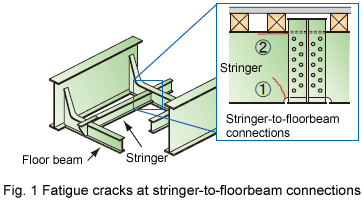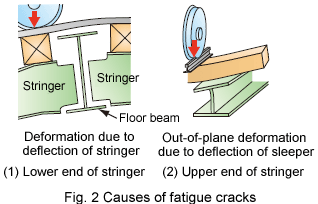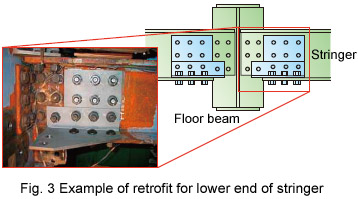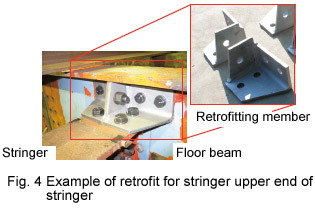In existing steel railway bridges of the through girder type, such as through plate girders and through trusses, fatigue cracks of floor system members has frequently been found in recent years. In particular, many fatigue cracks occur from stringer-to-floorbeam connections. Those cracks leads to the fracture of the members and seriously influence the running of trains. Focusing on the stringer-to-floorbeam connections, the RTRI identified the causes of fatigue cracks through past incident survey, finite element analysis and loading tests, and then proposed a technique of retrofit to prevent the cracks.
The RTRI identified the features of cracks at stringer-to-floorbeam connections for each area of occurrence through a past incident survey (Fig. 1). Simulations by finite element analysis and loading tests using actual bridge members revealed that the occurrence of cracks is attributable to particular types of deformation (Fig. 2). From the results, the RTRI devised a retrofitting technique to suppress the deformations as a preventive measure against each type of crack (Figs. 3 and 4) and confirmed the effectiveness of stress reduction in the areas of occurrence through loading tests. For instance, with the retrofit for the upper part of the stringer (Fig. 4), stress can be reduced to about half. Consequently, the residual fatigue life can be elongated by a factor of about eight. The retrofitting method is also useful for countermeasures against generated cracks.
|







